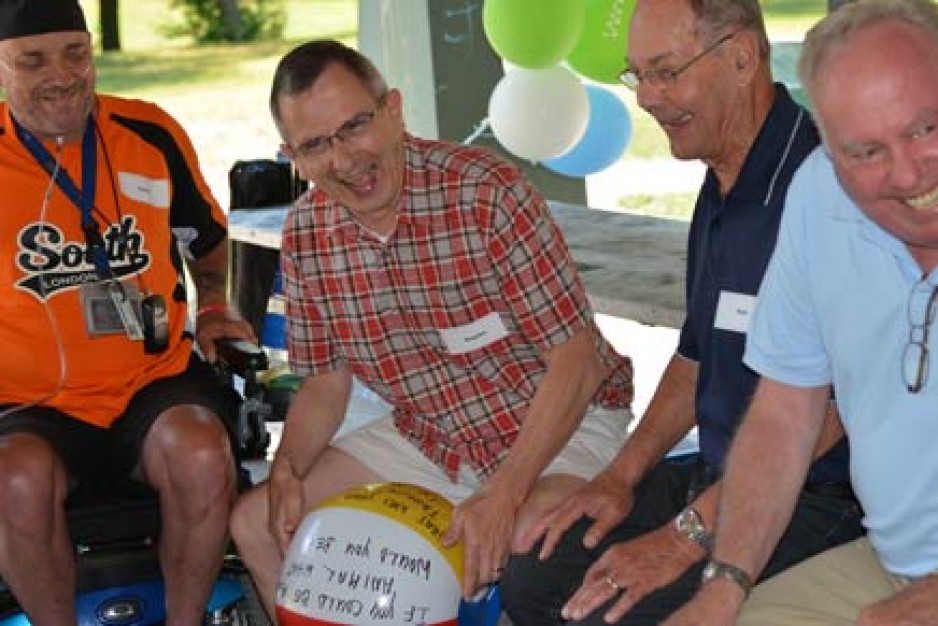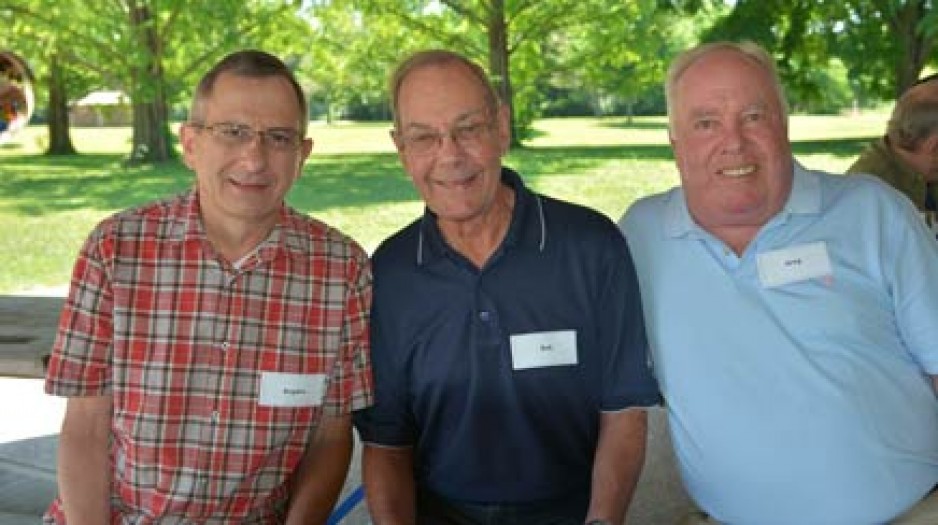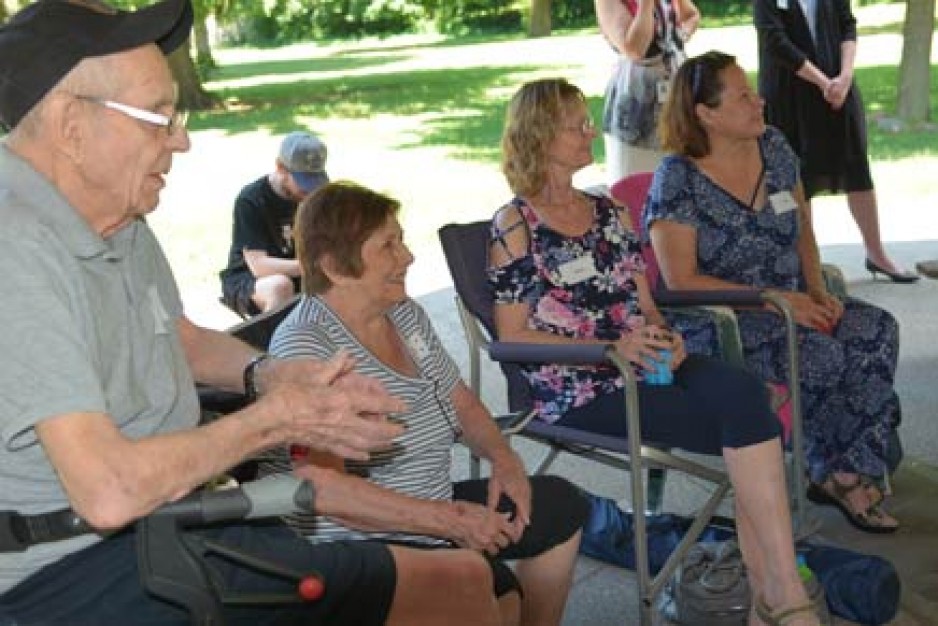COPD patients breathe in benefits of fitness
Just a few months ago, Jim Kenny would have described himself as fragile. He couldn’t walk to the end of his lane to take out the garbage. He was depressed with no social life and dwindling independence. “I was in desperate shape.”
For Byron Ducharme, 76, taking a shower and putting on socks and shoes were herculean feats that would leave him exhausted.
And at only 52, Dawn Kennedy’s extreme low energy had taken a toll on her mental health. She was perpetually sad. Quality of life was “deteriorating rapidly.”
For each of these individuals, chronic obstructive pulmonary disease (COPD) had slowly imprisoned them in their homes and bodies. Needing increasing help and medical care, they felt isolated and bleak. Battling for every breath, many of life’s pleasures had slowly slipped out of reach.
A warm sunny day in Gibbons Park
But on a warm sunny day in Gibbons Park, Jim, Byron, Dawn and about 45 others tossed a ball around and played games in the shade of a pavilion. Jim was up on his feet with a walker, foregoing his usual wheelchair. Strangers had become friends. There were smiles, laughter and camaraderie, and an undeniable sense of confidence and hope.
All are participants in St. Joseph’s COPD Program, which includes education, pulmonary fitness training and an exercise maintenance program. While many thought exercise was impossible, all are now rediscovering joys that had eluded them for years.
“Most people who join the program believe they can’t exercise”, says nurse practitioner Laurie Loveland. “Often short of breath and tired, many individuals with COPD tend to avoid being active. We have patients who could do less than a minute on the treadmill who are now up to 30 minutes. We have patients who couldn’t walk from the hospital’s entrance to our program who are now walking up to the gym.”
While St. Joseph’s has provided care and education for those with pulmonary disease for decades, a shift at St. Joseph’s Hospital to predominantly outpatient care and a robust focus on chronic disease management has programs coming together in new ways to address the needs of patients living with multiple chronic conditions.
As a result, the COPD Program has recently been rebooted and expanded with added emphasis on pulmonary fitness. Patients are assessed and individualized exercise programs developed in collaboration with the rehabilitation trainers with St. Joseph’s Cardiac Rehabilitation and Secondary Prevention (CRSP) Program. The COPD patients begin their exercise regimen using the exercise facility at St. Joseph’s Hospital now shared by the CRSP and COPD Program.
Improving quality of life for COPD patients
“Our COPD Program is part of a thrust at St. Joseph’s Hospital to integrate care for patients looking at each patient and their multiple needs to improve quality of life,” explains respirologist Dr. Don Farquhar, Medical Director of the COPD Program. “There’s a fluidity of programs so that we can find the care pathway that best suits the patient.”
Through the COPD Program, patients receive medical care and the opportunity to join an eight-week, classroom-based group learning program. Most patients also enroll in a group exercise program, beginning with an eight-week intensive phase of sessions held twice weekly at St. Joseph’s Hospital, followed by a six-month maintenance phase of once-weekly sessions in partnership with the downtown YMCA. During their time in the exercise program, patients take part in skill building sessions with a psychologist to better manage the anxiety and stress that often comes with COPD.
“Beyond medication, there is a lot we can do,” explains Dr. Farquhar. “With exercise training, we are not altering underlying lung physiology, but rather optimizing the patient’s general fitness and conditioning, and thus their ability to manage the ventilatory burden that COPD imposes on their muscles. The predominant symptom of COPD is breathlessness, which leads to a downward spiral of inactivity, deconditioning, and more breathlessness. Exercising and improving their level of fitness helps patients break out of that spiral, become active again, and derive more enjoyment from their day-to-day lives. And we also know, from published research and from our own experience to date, that even patients with severe COPD can become more fit and active through exercise.”
Celebrating graduates with a picnic
The picnic at Gibbon’s Park was a celebration for the first graduates of the rebooted program, who are now moving on to the maintenance phase at the YMCA.
Dawn used to rely on a motorized cart to get around the grocery store. She can now manage on her own and once again enjoys browsing in stores.“It’s inspiring for us to see the sense of community that has been built among the patients and their loved ones,” says Laurie. “They have developed an informal support group. They share rides and meet after class. Seeing others with lung disease making progress has made a significant difference for them.”
“I gardened this year,” she says excitedly. “I even cut the grass. I haven’t done that in years!”
Jim also remarks on his new found energy. “It’s night and day. I have more strength, more energy, more confidence.”
Byron was among those who had little faith that exercise would do him any good.
“But it’s made a tremendous difference in my life. I can do more with my grandchildren and great grandchildren. I can do things without difficulty. The program has opened my life up to activity.”
For Fred Teetzel, the group format of the program was motivating, the other participants giving him incentive to give it his all.
“It strengthened my body and gave me a better perspective on what I could do with the resources I had,” he said.
Bogdan Rutkowski found being among others with COPD powerful for a different reason.
“When you interact with people, you feel better. And when you feel better, you stop thinking about your own health problems. The program also helped me get to a point where exercise is part of my day and provided me with knowledge to better cope when I’m out of breath, when my oxygen levels are down, how to approach tasks.”
For St. Joseph’s to host a picnic for the graduates, adds Bogdan, “is a beautiful thing.”
“It lifts the spirits. And when spirits are raised, you live longer.”


